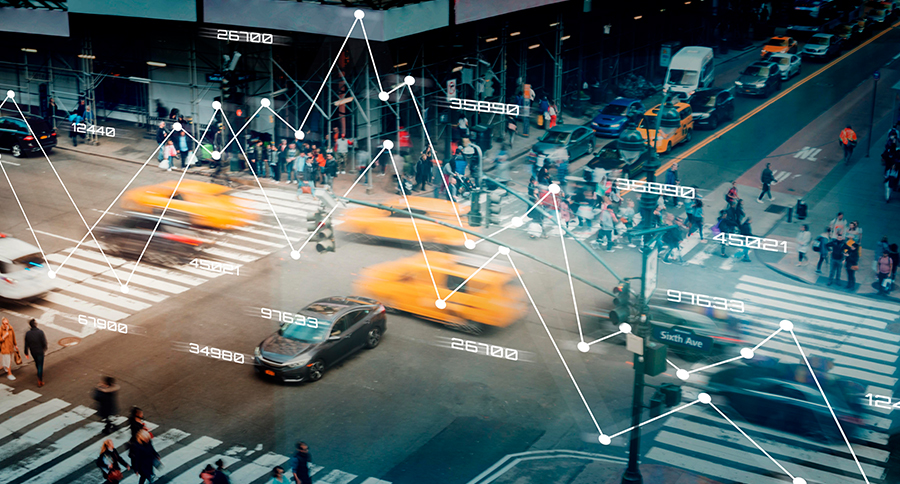
01 Mar Case Study: Next Generation IoT Mobileye Automobiles and Smart City Initiatives
It is estimated that a motorist makes 400 observations, 40 decisions, and one mistake for every two miles driven. The US-based National Safety Council puts this in perspective with its own statistics that says motor vehicle accidents resulted in more than 4.6 million injuries and 40,000 deaths in the US last year. While this can be traced to a variety of factors including distraction, fatigue, aggression and impairment, the fact remains—far too many vehicular accidents occur on the roadways.
With recent advances in sensor technology that have been implemented both roadside and in vehicles there is a belief that real-time alert systems will mitigate traffic collisions by giving drivers a greater awareness of accident potential and sufficient time to take action.
One of the leaders in advance driver assistance system (ADAS) technology is Mobileye, which develops camera based products that have been embedded in millions of vehicles across the globe. The technology is not only providing critical road safety capabilities, but that same data is being applied by municipalities to enhance their smart community initiatives.
Mobileye’s technology uses visual sensors that repeatedly scan and identify common highway features, obstacles, and conditions including lane markings, speed limits, road conditions, weather, pedestrians, accidents, obstructions, and other roadway related information. Distances to these traffic constraints are continually recalculated in real time and potential dangers are conveyed to the driver with visual and audio alerts. The system employs computer vision, an application of artificial intelligence that extracts cognitive information from digital images and videos that emulates the manner in which humans process and respond to visual information.
The technology deployed includes a number of traffic monitoring capabilities and the resultant safety features including autonomous emergency braking, blind spot monitoring, lane centering, forward collision warning, intelligent speed adaptation, night vision, pedestrian detection, road sign recognition, and other functions. The extensive amount of data collected to support these features is processed on-the-fly using onboard technology that is capable of computing trillions of mathematical calculations per second.
The spatial analysis capabilities in Esri’s software is being used on the data collected by Mobileye’s ADAS to expand its functionality and provide cutting edge location intelligence, refined visualization, and enhanced mapping capabilities. By synthesizing this network of sensors into a common unified map, cities can now have a type of situational awareness that was previously unavailable.
“Vehicles equipped with this technology can function together as a fleet of powerful sensors that are actively moving around the city continually collecting imagery and data,” says Jim Young, Business Development Head at Esri. “The data collected provides the opportunity for the real-time monitoring needed for a number of community initiatives including public safety and emergency response. We can provide it, overlaid with other data layers to city officials in a dashboard to support better civic engagement.”
When combined with other geospatial data maintained by the city, this information can stimulate cross-disciplinary collaboration among local traffic planners and engineers, police officers, and policymakers in support of smart community initiatives. Vision Zero is one such initiative that is gaining support in cities throughout the world. It was first implemented in Sweden in the 1990s to eliminate all traffic fatalities and severe injuries, while increasing safe, healthy, equitable mobility for all.
“Currently, we are developing connected ADAS systems,” says Nisso Moyal, Director of Business Development & Big Data at Mobileye. “What this means is that we will be able to alert drivers not only to a potential collision that has been detected by the onboard camera itself, but also to dangerous conditions that are on the roadway ahead, such as a sharp curve or an accident 500 meters up the road that has been identified by another vehicle equipped with our technology.”
In the future, Mobileye is planning to make greater use of artificial intelligence in the autonomous car system it is developing so that the cars using the system can respond more quickly and intelligently in emergency situations and during times of heavy traffic. The technology is intended to go beyond rule-based decision making by analyzing and learning from the data it collects and the decisions it makes based on that data, which will allow it to develop more human-like response skills.
Unleashing GIS Technology’s potential in every industries
